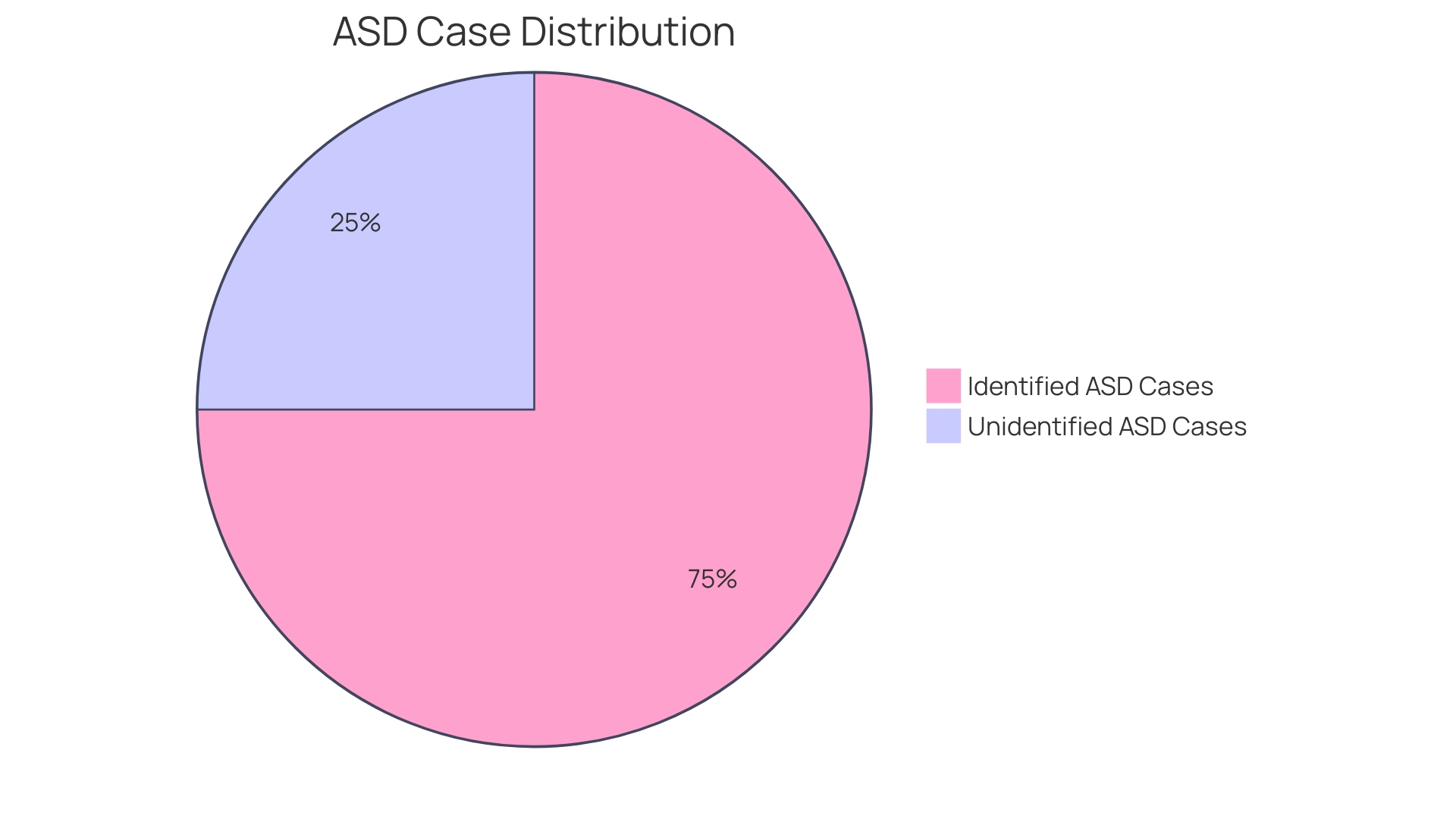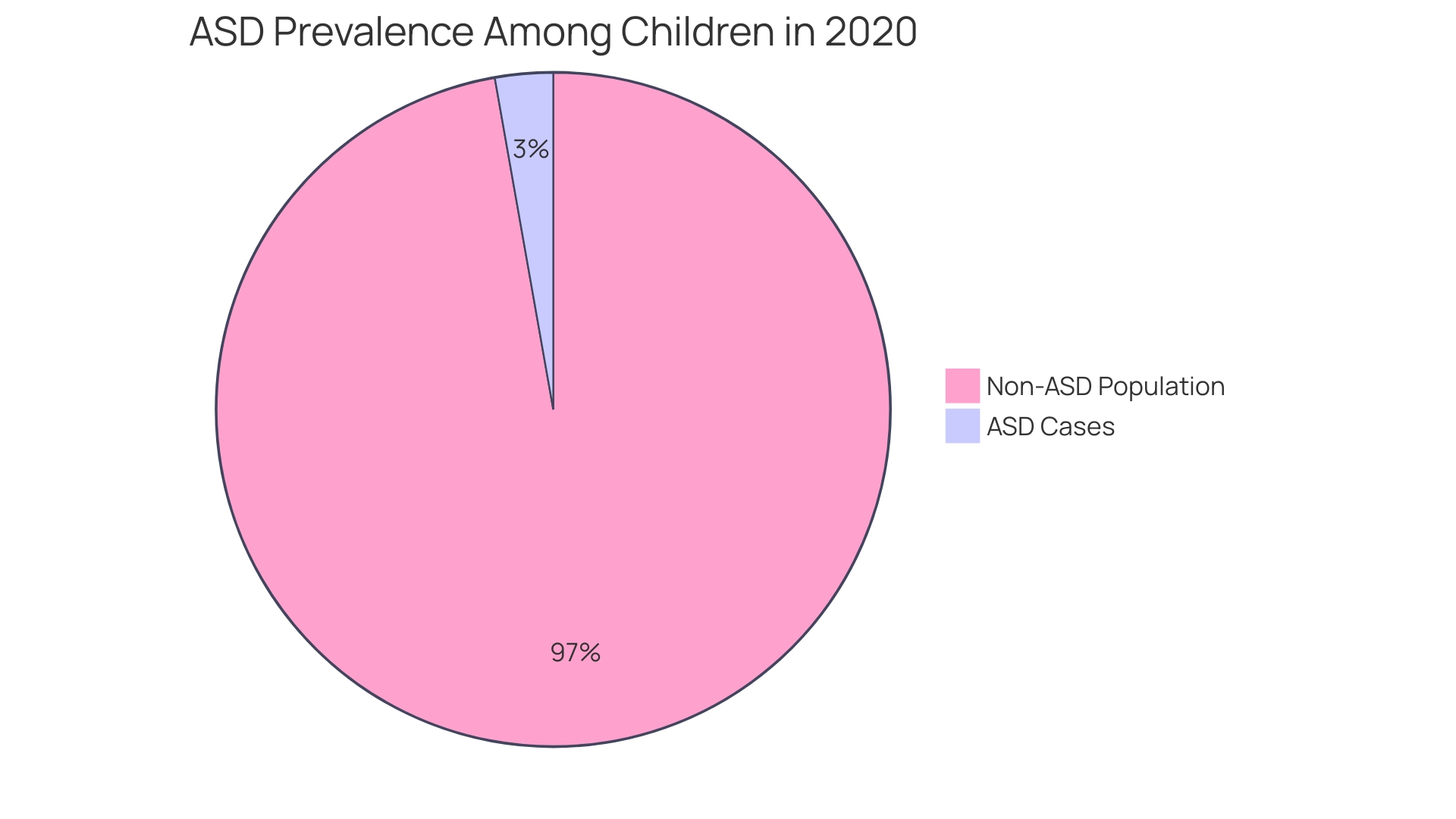Introduction
Autism Spectrum Disorder (ASD) affects millions of children globally, cutting across ethnic, racial, and socioeconomic groups. Over the years, there has been a significant shift in how we diagnose and recognize autism, leading to a rise in its prevalence. However, this increase is not due to an actual surge in the condition but rather improved observational techniques and awareness among professionals.
Despite progress, individuals with autism and their families still face societal challenges. Recognizing the diverse manifestations of autism is crucial for providing tailored support and resources to meet their unique needs. In this article, we will explore the global prevalence of autism, the specific prevalence in the United States, the changes in prevalence over time, and the factors contributing to the rise in autism diagnoses.
By understanding these aspects, we can work towards ensuring the well-being and inclusivity of individuals with autism.
Global Prevalence of Autism
Autism Spectrum Disorder (ASD) is a complex condition characterized by varying degrees of difficulty with communication and behavior. The awareness of a developmental disorder has widened significantly over the years, and it is now recognized to impact roughly 1 in 160 children globally, cutting across ethnic, racial, and socioeconomic groups. This comprehension stems from a significant change in how we diagnose and acknowledge the disorder, with clinicians becoming skilled at identifying the condition that was always present. The increase in the diagnosis of this condition is attributed to improved observational techniques and awareness among professionals rather than an actual rise in prevalence. Despite the progress in recognizing ASD, the condition is still met with societal challenges, affecting not just the individuals but their families as well. Recognizing the wide range of expressions displayed by individuals on the autism spectrum is crucial, as it reinforces the importance of providing personalized support and resources to meet the unique needs of each person with autism and their loved ones.

Autism Prevalence in the United States
The frequency of autism spectrum disorder (ASD) in the United States is not just a statistic—it is a crucial measure that reflects the lives and experiences of millions. Recent data from the Centers for Disease Control and Prevention (CDC) indicates that about 1 in 54 children has been identified with ASD. This number, staggering as it may seem, underscores the growing need for comprehensive support systems and informed policy-making.
The rise in frequency rates, as stated by the CDC, indicates that the condition is more widespread than previously believed. A report from KDVR notes a significant rise in the number of children identified with ASD—from 1 in 150 in 2000 to about 1 in 36 in 2020. This upward trend could be due to heightened awareness and improvements in screening practices, as suggested by Dr. Amanda Kelly from Firefly Autism. She emphasizes the importance of recognizing the unique aspects of autism and enhancing community understanding.
Understanding prevalence is about more than numbers; it's about shaping better health outcomes for those affected by ASD. Organizations like the Human Services Research Institute (HSRI), funded by the NCBDDD/CDC and in partnership with the AoD/ACL, are key players in this endeavor. Their planning study aims to establish an I/DD Health Data Center, which will provide invaluable data on health conditions and service usage. This initiative, informed by the input of over 60 stakeholders, could lead to improved services for the I/DD community.
The 'prevalence' of autism—a term encapsulating the number of individuals with the condition—highlights the importance of accurate health information. This data is crucial for tailoring services to meet the diverse needs of the community affected by a developmental disorder. As we look ahead, a national 'road map' has been proposed to guide the necessary changes, ensuring support systems evolve in tandem with our understanding of individuals with autism.
Changes in Autism Prevalence Over Time
While statistics from the Centers for Disease Control and Prevention (CDC) indicate a rise in the prevalence of ASD among children—with recent figures showing about one in 36 children identified with Autism Spectrum Disorder (ASD) in 2020, up from one in 44 in 2018 and one in 150 in 2000—it is essential to delve into what these numbers truly represent. This increase is largely attributed to advances in diagnostic practices, heightened awareness, and evolving diagnostic criteria rather than an actual surge in the incidence of the condition itself. Clinicians have refined their abilities in detecting autism spectrum disorder, a situation with no straightforward test, requiring expertise in nuanced observational techniques. Consequently, the variability in diagnosis rates is notable across different regions and even school districts, reflecting disparities in clinician training and experience. The concept of neurodiversity further informs this discussion, recognizing the intrinsic value in the variety of human brains and cognition. As we acknowledge the spectrum of neurodivergent disorders, such as ADHD and others, our capacity to identify and support these diverse neurological profiles continues to expand.

Factors Contributing to the Rise in Autism Diagnoses
The rise in diagnoses of this developmental disorder in recent years can be attributed to several factors that have converged to enhance detection and understanding of the condition. Clinicians have improved their capacity to identify a condition that can be difficult to detect due to the absence of a straightforward diagnostic test and the requirement for specialized training in observational methods. As professionals have become more adept at identifying the nuanced signs of autism across different populations, the number of diagnosed cases has naturally risen. The Centers for Disease Control and Prevention (CDC) has noticed a significant rise in the occurrence of Autism Spectrum Disorder (ASD); their data shows that in 2020, approximately one in 36 children were identified with ASD, a notable increase from one in 44 in 2018 and one in 150 in 2000. Moreover, this prevalence is now more evenly distributed across various demographic groups.
The evolution of diagnostic criteria also plays a critical role in this uptick. Over time, the parameters defining a certain condition have broadened, allowing for a more inclusive recognition of individuals across the spectrum. This change has been pivotal in capturing those who may have been overlooked in the past. Additionally, improved availability of medical care and the focus on early intervention initiatives have played a crucial role in supporting individuals with the condition.
The Interagency Autism Coordinating Committee (IACC), a federal advisory committee, has been at the forefront of fostering progress in research and services for individuals with autism spectrum disorder (ASD). Comprised of a diverse group of stakeholders, including federal officials, autistic adults, family members, advocates, and researchers, the IACC strives to ensure coordinated efforts and open communication across various federal entities and the broader autism community. Their independent suggestions are based on a thorough comprehension of the situation and represent the combined knowledge of its members.
The concept of neurodiversity is reshaping our approach to neurodevelopmental disorders, celebrating the unique differences and inherent validity of individuals. It posits that while some people, described as neurotypical, share broadly similar neurological functions, others are neurodivergent and experience the world with brains that operate differently. Among many conditions that fall under this umbrella, autism—alongside ADHD, dyslexia, and dyspraxia—is one of the most commonly diagnosed.
In sum, our improved understanding of neurodiversity stems not from a surge in its occurrence, but from a society that is learning to better identify and support diverse neurological conditions. With ongoing research, dedicated advocacy, and a commitment to understanding the full spectrum of human neurology, we continue to improve the lives of those with autism.
Conclusion
In conclusion, the prevalence of Autism Spectrum Disorder (ASD) has increased due to improved diagnostic techniques and awareness among professionals. This rise does not indicate a surge in the condition itself, but rather our ability to better recognize and diagnose autism. Recognizing the diverse manifestations of autism is crucial for providing tailored support to individuals with autism and their families.
Understanding the global and specific prevalence of autism helps us work towards ensuring their well-being and inclusivity. The increase in autism prevalence rates in the United States highlights the need for comprehensive support systems and informed policy-making. Heightened awareness and improved screening practices have contributed to this rise, and organizations like the Human Services Research Institute (HSRI) provide valuable data to guide services.
Changes in autism prevalence over time are mainly attributed to advances in diagnostic practices and evolving criteria. The concept of neurodiversity recognizes the value of different neurologies and helps us identify and support diverse profiles.
Several factors have contributed to the rise in autism diagnoses, including improved clinician recognition, broadened diagnostic criteria, and access to healthcare services. The Interagency Autism Coordinating Committee (IACC) plays a vital role in fostering progress and ensuring coordination in research and services.
In conclusion, our enhanced recognition of autism stems from society's growing understanding and support of neurodiversity. Through ongoing research, advocacy, and a commitment to understanding the full spectrum of human neurology, we can continue to improve the lives of individuals with autism and promote their well-being.




